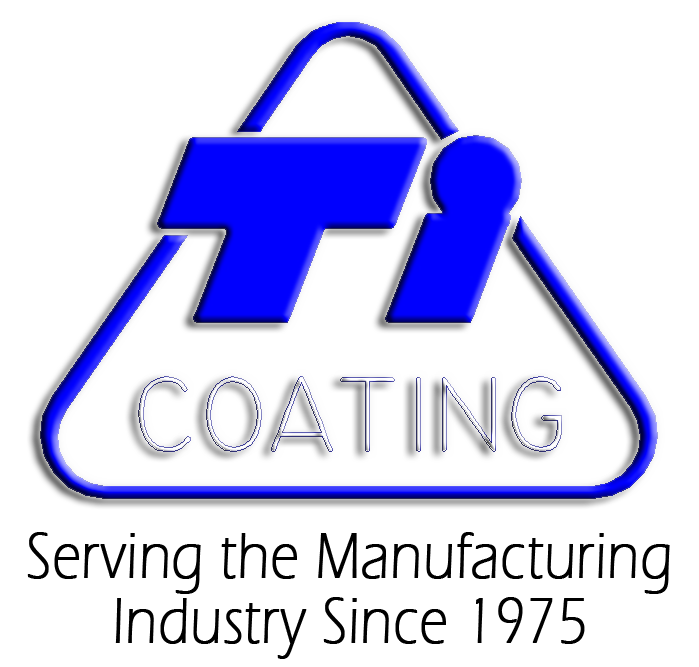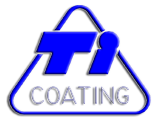While both of these characteristics are very important to the performance of the coating they should not be the determining factor in the choice. It is more important to choose the proper substrate and match the proper coating process and coating compound for your application. The physical numbers that are associated to the specific coating compound are statements of tests conducted on controlled substrates and controlled surface finishes. They are very difficult to correlate to the performance of a coating compound on a specific application.
The coating compound will only add a few microns of thickness to the part. Concern over substrate movement needs to be discussed when considering CVD coating of steel substrates. Please consult our technical department when considering CVD coating of steel material.
In most cases yes. Some complex coating compounds are more difficult to remove than others and require special chemicals to achieve removal. In general it is common practice to coat over existing coatings when part tolerance allows. Damage to substrates such as carbide and high cobalt content steel such as M-42 is a risk when considering stripping old coating.
No. The substrate and geometry are dependent upon the application. The best results are achieved when the proper substrate and coating process and compound are engineered prior to the build of the tooling. A poorly designed tool or a tool made of an inappropriate substrate will not benefit from coating. Please refer to our “material coatability” list for additional information.
Masking surfaces not requiring coating is relatively easy when coating is being done with PVD technology. Masking when coating with CVD processing is very difficult and in most cases not practical.
The nature of CVD coating compounds being formed by reactive gases flowing at high temperature provides a uniform homogeneous coating being deposited on all surfaces including internal diameters. PVD coatings are “line of sight” and are deposited on the surfaces of the components that are presented to the coating target plasma. PVD coating process technology uses mechanical part rotation ranging from single axis to triple axis rotation in order to achieve coating on multiple surfaces. The general rule of thumb for PVD coating of I.D. surfaces is a coating depth of 1X the internal diameter will be achieved. This factor becomes less as the I.D. becomes smaller than .500.
Coating can add surface roughness due to the deposition process. This can be overcome by doing post-coat polishing to the critical working surfaces. In general coating compounds will not improve surface finishes. The coating deposition will conform to the surface condition of the part. Coating compounds will not fill voids or bridge gaps in surface finishes.
Coating thickness measurements are stated as Micron units. One Micron (µ) is equal to .00003937. General coating compound thickness ranges are from 2-12 Microns depending on the process used and the compound being deposited.
The most important aspect of preparation is cleanliness. To achieve the proper adhesion of the coating compounds the surface of the tools must be free of contaminants such as oils or wax which are often found in protective dip seal materials. The presence of any oxidation from thermal processing or rust must also be removed from the surfaces prior to coating.
Reduced operating cost achieved through increased up time on equipment. Increased productivity achieved through additional parts being produced per tool purchased. Additional cost savings may be achieved by the elimination of expensive coolants and their disposal whenever dry machining becomes a possibility.
CVD is an abbreviation for Chemical Vapor Deposition. A technology developed to deposit thin film coating compounds on a limited range of materials. Due to the elevated process temperature of CVD coating technology, commonly applied at 1000º Centigrade, this process is not applicable to certain grades of tool steel.
PVD coating is an abbreviation for Physical Vapor Deposition. A technology developed to deposit thin film coating compounds on a variety of materials. The process temperature of this technology generally is in the range of 250º – 600º Centigrade, which allows the process to be applied to a broad range of materials.
The HFIC process was originally developed to remove the metal oxides from high temperature alloys after the coatings had been removed. Today, the HFIC process is also being utilized to strip coatings from turbine engine components. New uses for the HFIC process are being developed as our technology advances. Should you have a potential new use for the HFIC process, contact Ti-Coating, Inc. to investigate and test your process needs.
The process room should have continuous ventilation during HFIC operations to provide fresh air in the room, a continuous flow of room atmosphere past gas leak detectors and a negative pressure in the process room with respect to the surrounding areas in the plant. In the event of a Hydrogen or HF leak in the process room all gas flow will be stopped on the system and a large exhaust fan should be turned on to provide additional purging of the process room.
The Ti-Coating, Inc. HFIC System comes as a Modular Unit and is self-contained including process control and touch screen computer operator interface. Should your processing procedures require a separate control room for the operator during HF operation, an optional control console with duplicate operator machine interface is available.
Each end user of HFIC Equipment should access their usage patterns and determine their safe operating practices and emergency procedures. Ti-Coating, Inc. can provide engineering assistance in these concerns. While a separate building may not be necessary, an isolated enclosed process location might be considered.
The process gasses used in HFIC systems are Argon, Hydrogen, Hydrogen Fluoride, Anhydrous Ammonia and on some systems Nitrogen.
– Argon – used to purge the reactor chamber before and after Hydrogen use – customer supplies, liquid source preferred.
– Hydrogen – the carrier gas for the process – customer supplies, liquid source preferred.
– Hydrogen Fluoride – reactant gas for the process – customer supplies, 2 bottles housed in special gas cabinet on HFIC system.
– Anhydrous Ammonia – neutralizing agent for HF gas – customer supplies, 2 bottles mounted on HFIC system.
– Nitrogen – sometimes used for cold reactor purging and scrubber system purging – customer supplies, liquid source or gas bottles.
Ti-Coating, Inc. Standard HFIC Systems are designed to operate on 380 Volt, 50 Hz. 3 Phase Power or 480 Volt, 60 Hz. 3 Phase Power. Other voltage options may be available by contacting the factory.
Most Countries and/or States require emissions permitting for HF System operation. Exhaust stack testing may be required also. Special considerations should be given to on site HF storage. Always check with local authorities for the requirements in your area.
The loading arrangement can be either Top Load (the load is lowered into the reactor)
or Bell Style.
– Top Load: the reactor cover, support grid and parts are lowered into the reactor
– Bell Style: the parts are loaded on the base support and the reactor chamber and furnace are lowered over the load.
Floor space requirements will vary with equipment size, and can be adjusted to adapt to existing plant conditions. However, they may typically be as follows:
– Smaller system; 15 feet wide by 25 feet long
– Medium system; 22 feet wide by 30 feet long
– Large system; 24 feet wide by 38 feet long
Ti-Coating, Inc. HFIC Systems are available with three standard furnace diameters accommodating multiple reactor chamber diameters and lengths.
– 16″ & 20″ diameter by 24″ or 38″ tall work zone
– 30″ to 42″ diameter by 24″ to 50″ tall work zone
– 50″ diameter by 38″ to 50″ tall work zone
The Ti-Coating, Inc. HFIC System incorporates an off gas scrubbing system utilizing Sodium Hydroxide or Potassium Hydroxide to convert the metal fluorides to metal salts and Sodium or Potassium Fluoride. The residual unused HF is also converted to Sodium or Potassium Fluoride.
Yes!! Hydrogen Fluoride is very Toxic by inhalation. HF gas forms Hydrofluoric Acid in the presence of water vapor and may cause severe chemical burns. All personnel should be familiar with the HF MSDS sheet.
The Hydrogen Fluoride Ions react with the metal oxides on the part to form metal fluorides and water vapor. The HF ions clean not only the surface of the alloy component but inside the microscopic cracks.
The Gaseous HFIC process was developed by Ti-Coating, Inc. to remove metal oxides from high temperature alloys used in turbine engines.
The oxides present rise to the surface as heat is applied and stop the braze material from penetrating the surface. Not allowing penetration keeps the braze material applied from doing its intended action.
First, consider the material. If it is of high Nickel content, it probably will need HFIC cleaning. Second if a repair is accomplished by welding and the weld continues to crack or if repaired by brazing and the braze seems not to have penetrated below the surface, chances are good that the oxides formed during operation are still present and not allowing the repair to be complete.
Any hot section part made primarily of Nickel, or trade name Inconel, requires an HFIC cleaning prior to repair. The oxides from the front of the engine of parts made from Aluminum and Titanium need to be removed. If not the welds will most likely crack and the braze could run.
Hydrogen Fluoride Ion Cleaning (HFIC, FIC or HF) is a high temperature, controlled atmosphere, Ion Cleaning Process.
You may call or fax C/S and they will direct your inquiry. If customers wish to have copies of invoices or statement, please route those requests to accounting@ticoating.com.
Yes, Ti-Coating’s minimum order charge is $75.00
Yes Ti-Coating does post-coat polishing. Please specify on your order.
Ti-Coating, Inc. will be receptive to most testing opportunities.
Please contact your Ti-Coating representative to discuss our product testing policy.
Yes, Ti-Coating accepts MasterCard or Visa Card payments. Credit card payments are subject to a $10 processing fee.
You may call, fax or email requesting a “New Customer Application”. Completed new customer packets should be send to customerservice@ticoating.com.
We offer a statement of Limited Liability as adopted by the Metal Treating Institute. Essentially, all work is accepted subject to certain conditions. It is recognized that even after employing all the scientific methods known to us, hazards still exist in metal treating. Our liability shall not exceed twice the amount of our charges for the work done on any material.
Yes, within the Detroit metropolitan area… at no charge. Affected customers may call our customer service department (Tel. 586.726.1431) to request pick-up/ delivery.
Approximately 2-4 days for PVD coating and 5-7 days for CVD coating as it must be coordinated with the current coating schedule. We also offer a “24 hour” service for PVD TiN based upon advance notification to our customer service department on a “first come first served” basis at no extra charge.
We need the type of material to be coated, the physical dimensions and the quantity.
The cost is based on how much room the entire part takes up in the coating chamber (not the amount of coating). When contacting C/S for a quote you may email or fax an RFQ. We require OD and OAL measurements for cylindrical parts and W x H x L dimensions for all other parts in addition to what material the part to be coated is. A print or a sketch is always welcome with your request.


